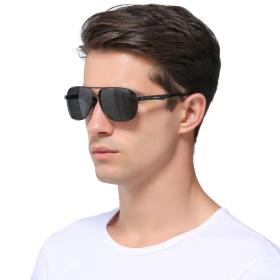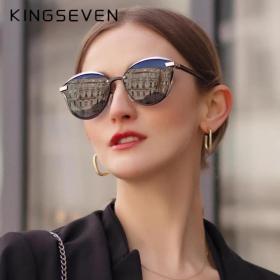- English
- Español
- Português
- русский
- Français
- 日本語
- Deutsch
- tiếng Việt
- Italiano
- Nederlands
- ภาษาไทย
- Polski
- 한국어
- Svenska
- magyar
- Malay
- বাংলা ভাষার
- Dansk
- Suomi
- हिन्दी
- Pilipino
- Türkçe
- Gaeilge
- العربية
- Indonesia
- Norsk
- تمل
- český
- ελληνικά
- український
- Javanese
- فارسی
- தமிழ்
- తెలుగు
- नेपाली
- Burmese
- български
- ລາວ
- Latine
- Қазақша
- Euskal
- Azərbaycan
- Slovenský jazyk
- Македонски
- Lietuvos
- Eesti Keel
- Română
- Slovenski
- मराठी
- Srpski језик
How to choose the right sunglasses?
2025-09-16
When choosing sunglasses, it's not just about blocking the harsh sunlight or pursuing a fashionable look. A good pair of sunglasses is an essential protective gear for your eyes in strong light conditions. So, how can you choose a pair of sunglasses that truly protect your eyes?

Selection of UV protection function:
The core task of sunglasses is to block harmful ultraviolet rays. Ultraviolet rays are one of the main causes of eye diseases such as cataracts and macular degeneration. Make sure to recognize the UV protection label and choose ones that can completely block all ultraviolet rays with wavelengths below 400 nanometers. Don't be deceived by dark lenses; if the lenses are only dark in color but lack UV protection, they will instead cause the pupils to dilate in dim environments, allowing more ultraviolet rays to enter the retina, causing greater damage.
Selection of lens color:
For daily commuting and general outdoor activities, gray, green or brown lenses are the most common and recommended choices. They can evenly reduce the intensity of light and maintain the original true colors of objects, effectively reducing visual fatigue, and are suitable for driving. If you often engage in activities on cloudy days or in smoggy conditions or need a clearer visual contrast, yellow, amber or copper-colored lenses will be better helpers. They filter out some blue light, enhancing the layering and three-dimensionality of the scenery. For environments with strong reflections, such as water surfaces, snow, or when facing road reflections during long drives, polarized lenses can be chosen. They can efficiently eliminate annoying horizontal glare, making the view instantly clear and comfortable, and improving safety and visual comfort. For special environments such as high-altitude snow activities, deeper-colored lenses and side-wing shading designs may be needed.

Selection of lens material:
The most common resin lenses are relatively lightweight, not prone to cracking, and have a lower cost, but their surfaces are more susceptible to scratches. Therefore, products with hardened coating are more durable. If you pursue ultimate lightweight and impact resistance, especially when wearing them for sports or for children, polycarbonate lenses are ideal choices. They are extremely sturdy and can meet daily optical requirements. Glass lenses perform best in optical clarity and scratch resistance, providing the closest realistic visual experience, but they are heavier and have a risk of shattering upon strong impact. When choosing, a simple method is to hold the sunglasses and observe a straight line from afar through the lens, then slowly move the lens. If the line does not show any bending, distortion or jumping, it usually indicates that the optical quality of the lens is qualified.
Frame comfort and stability:
Sunglasses need to be securely worn on the face to provide effective protection. The frame size should be suitable for your face shape, without clamping the head or ears. The nose pads should be comfortable and will not press on the bridge of the nose. The length and curvature of the lens should be moderate to ensure that the glasses do not easily slip off when shaking the head. For situations requiring all-round protection, choosing more wraparound sports-style frames can better block light and ultraviolet rays entering from the sides.
| Selection Factor | Key Considerations |
| UV Protection | Must block 100% UVA/UVB (look for UV400 label). Dark lenses without UV protection cause pupil dilation, increasing retinal damage risk. |
| Lens Color | Gray/Green/Brown: Best for daily use & driving, reduce light evenly, true color. Yellow/Amber: Enhance contrast in fog/low light. Polarized lenses essential for water/snow/road glare elimination. Deep tints needed for high-altitude snow. |
| Lens Material | Resin: Light, affordable, scratch-prone (choose coated). Polycarbonate: Lightest, highly impact-resistant, ideal for sports/children. Glass: Best clarity/scratch resistance, heavy, shatter risk. Test quality by viewing straight lines for distortion. |
| Frame Fit | Must fit face securely without pinching. Nose pads should be comfortable. Temples should prevent slipping. Choose wraparound styles for full side protection in intense sun/reflective environments. |




